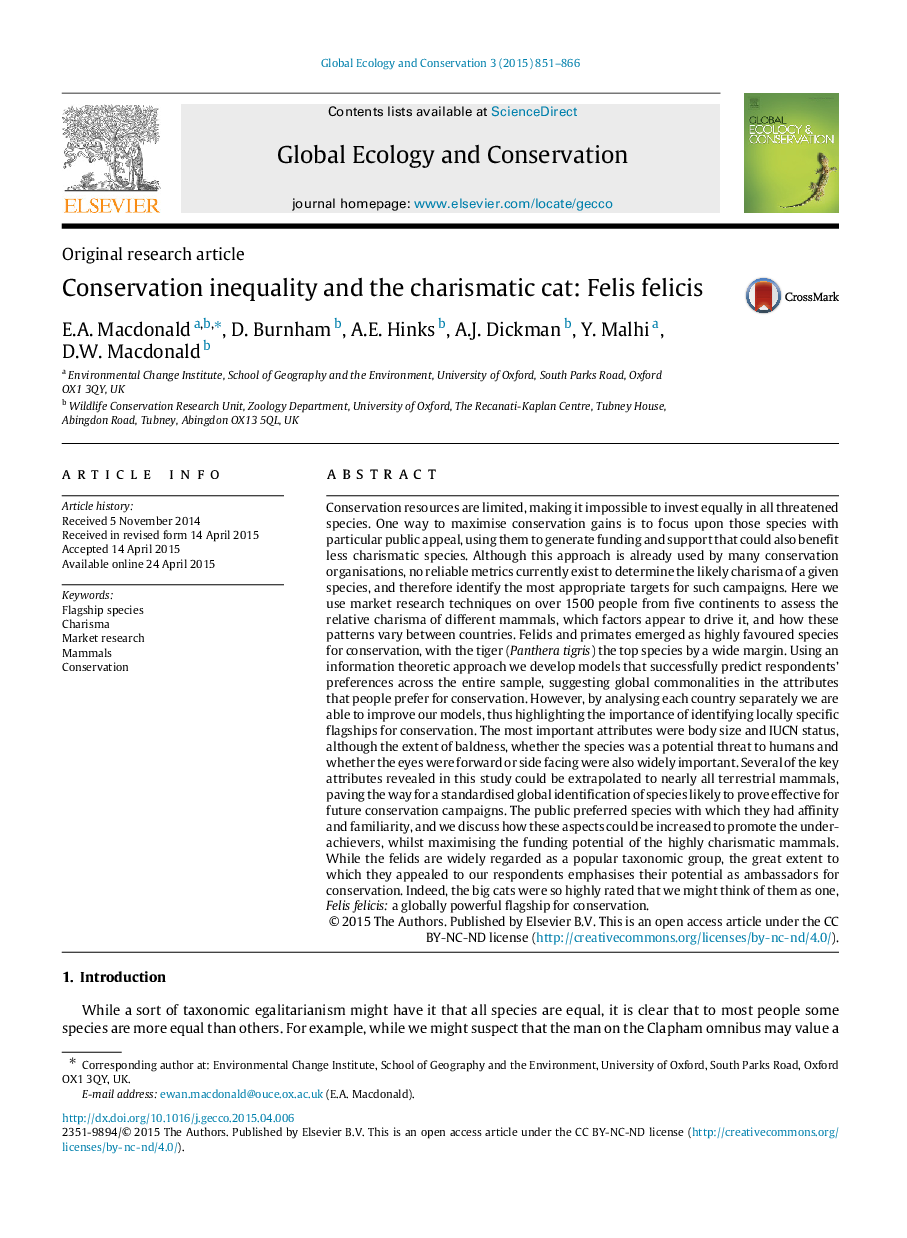| Article ID | Journal | Published Year | Pages | File Type |
|---|---|---|---|---|
| 4379609 | Global Ecology and Conservation | 2015 | 16 Pages |
Conservation resources are limited, making it impossible to invest equally in all threatened species. One way to maximise conservation gains is to focus upon those species with particular public appeal, using them to generate funding and support that could also benefit less charismatic species. Although this approach is already used by many conservation organisations, no reliable metrics currently exist to determine the likely charisma of a given species, and therefore identify the most appropriate targets for such campaigns. Here we use market research techniques on over 1500 people from five continents to assess the relative charisma of different mammals, which factors appear to drive it, and how these patterns vary between countries. Felids and primates emerged as highly favoured species for conservation, with the tiger (Panthera tigris) the top species by a wide margin. Using an information theoretic approach we develop models that successfully predict respondents’ preferences across the entire sample, suggesting global commonalities in the attributes that people prefer for conservation. However, by analysing each country separately we are able to improve our models, thus highlighting the importance of identifying locally specific flagships for conservation. The most important attributes were body size and IUCN status, although the extent of baldness, whether the species was a potential threat to humans and whether the eyes were forward or side facing were also widely important. Several of the key attributes revealed in this study could be extrapolated to nearly all terrestrial mammals, paving the way for a standardised global identification of species likely to prove effective for future conservation campaigns. The public preferred species with which they had affinity and familiarity, and we discuss how these aspects could be increased to promote the under-achievers, whilst maximising the funding potential of the highly charismatic mammals. While the felids are widely regarded as a popular taxonomic group, the great extent to which they appealed to our respondents emphasises their potential as ambassadors for conservation. Indeed, the big cats were so highly rated that we might think of them as one, Felis felicis: a globally powerful flagship for conservation.
